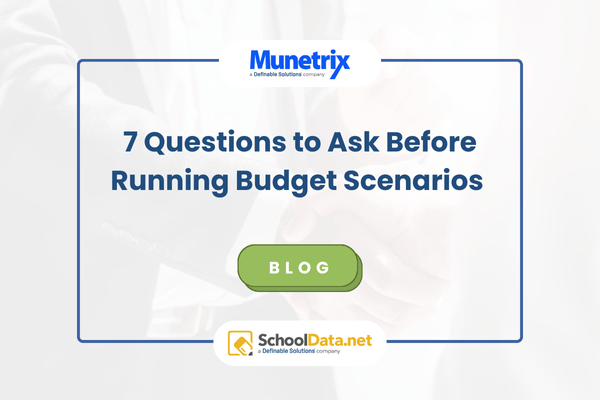The K-12 public education sector is abuzz with speculation that we are approaching a “fiscal cliff” when it comes to federal funding of public school systems. Forbes Magazine reported months ago that “Federal COVID relief funds will be running out in 2024. A continuing baby bust will hit school enrollment numbers. There might be a recession coming (or not). All of these shifts will create pressure for school districts.”
If cuts are coming, and even wholesale elimination of certain line items, what does that mean for school districts already struggling to adequately fund instruction, recruit educators, and make the necessary investments to improve outcomes, reverse learning loss, and maximize gains in student achievement?
Of course, districts were not supposed to apply emergency federal COVID dollars toward permanent expenditures, such as hiring. But many did, and funding can be fungible regardless. The result many fear is that personnel layoffs are looming — at a time when educators and administrators are already feeling overworked and overwhelmed.
What we are urging our client partners to do is to maximize their use of available resources, data and technology to start planning for various scenarios today so that whatever lies ahead in terms of difficult decisions to be made, they can be approached with forethought, planning, preparation and the most amount of complete information possible.
Three Ways to Prepare for the Next Fiscal Crisis Today to Minimize Pain and Disruption
Here are three things that superintendents, human resources professionals, educators and other district administrators can do today to plan for the uncertain future ahead:
1 – Try to identify opportunities to eliminate non-personnel expenditure redundancies.
Each passing year or so, without really thinking about it, professionals in every sector (the public and educational included) have incrementally added a tool here, an application there, a system here, a database there. We are now at the point at which enough has become more than enough — it’s become too much. Perhaps this is a time and opportunity to save costs by simplifying the administrative tech stack.
There are many reasons why you might want to simplify your tech stack, even if predicted cuts somehow fail to materialize. The most obvious among them is to save time and administrative burden of managing, maintaining and accessing this number of disparate technology tools. Certainly, once you find yourself looking to save money facing budget cuts, consider eliminating systems that overlap with one another — or consider finding one singular system that can achieve multiple tasks at the same time — as one way to save money before considering layoffs.
2 – Create peer groups to cross-analyze how other districts in your region are spending/cutting comparatively to your own.
The future of planning and budgeting is something called “comparative analytics.” Put simply, comparative analytics refers to the process of examining your own organization’s data and performance against those of your peers and competitors to draw more informed conclusions and to make better decisions. It’s a methodology for avoiding one of the greatest perils to critical decision-making: thinking we have all of the information we need and omitting a potentially decision-changing data set.
If you can view your own historical data and forward-looking projections against those of neighboring entities with whom you may be competing, won’t you be able to make more confident decisions and more strategic allocations of time, treasure and talent? Anything less, and you’re making critical decisions in a vacuum. If budget cuts become necessary, work today to plan for a future that affords you the confidence that you’re making cuts strategically and not putting your district at a competitive disadvantage relative to your neighbors and peers.
3 – Nobody knows the future with certainty. Build scenarios and plan for multiple potential tomorrows.
With so much uncertainty persisting in the public education sector, plans and predictions are ever-changing and more dynamic than ever. Creating a budget or forecast and presuming it will stand the test of time is no longer a luxury administrators and financial leadership have in this day and age. Cumbersome and laborious spreadsheets that remain static while the world evolves around them no longer suffice — especially knowing that drastic change may soon be coming.
Tools like the Forecast Builder and Budget Builder allow planning to be done with multiple possible scenarios envisioned, which can evolve dynamically and instantly. As new inputs or updated data become available using publicly available data sources and API, braided with a district’s own proprietary data, plans and budgets can be fluid and reflective of up-to-the-minute realities.
The Only Constant Is Change
Whatever tomorrow holds, we recommend that school districts plan for it today. Even if the future is uncertain and undefined. The last three years have been a period of unprecedented volatility and incredible changes and external pressures put upon those in charge of educating the future of our country.
We managed to do our best to survive a global pandemic, we continue to manage the impact dramatic inflation and the toll it’s taken on our budgets, and now another challenge most certainly awaits.
But just as we did with the prior crisis facing public educators, we will do our best to provide as much support, guidance, resources and innovation as we can, so that every decision they make is data-driven.


.png)
.png)
